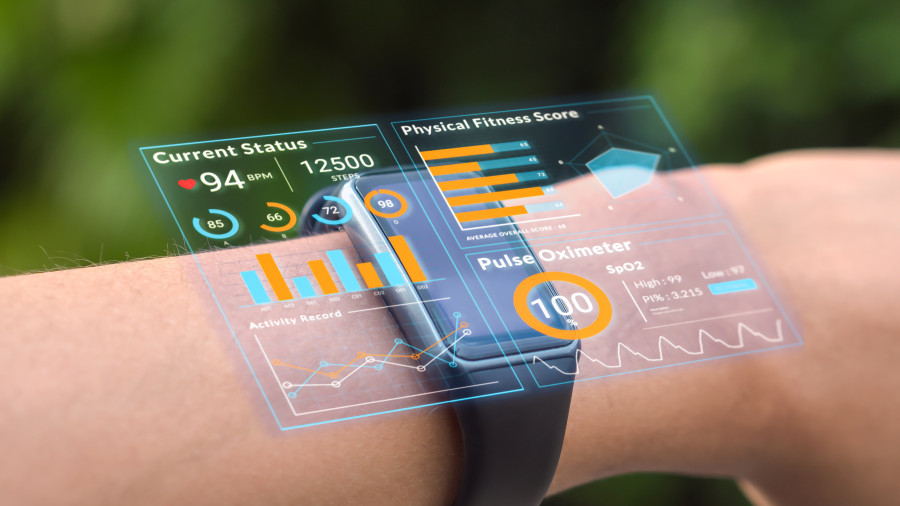-
1.Telemedicine
-
-
-
-
5.1.Data Privacy
-
5.2.Regulatory Issues
-
5.3.Accessibility
-
-
6.Conclusion
The healthcare industry has been rapidly transformed by technological innovation in recent years, revolutionizing the way healthcare is delivered and improving patient outcomes. From telemedicine to wearable devices to digital therapeutics, new technologies are emerging that are changing the face of healthcare as we know it.
Telemedicine
Telemedicine is a rapidly growing field that leverages technology to provide remote healthcare services to patients. It involves the use of various communication technologies, such as video conferencing, remote monitoring, and mobile health apps, to connect patients with healthcare professionals and deliver healthcare services from a distance. Telemedicine has numerous benefits, including increased access to care, improved patient outcomes, and reduced healthcare costs.
Benefits of telemedicine:
- Increased access to care for patients who are unable to travel to a healthcare facility
- Improved patient outcomes, particularly for those with chronic conditions who require frequent monitoring
- Reduced healthcare costs by eliminating the need for in-person visits and reducing hospital readmissions
- Improved patient satisfaction due to the convenience and flexibility of remote healthcare services
Examples of telemedicine technologies:
- Video conferencing: enables patients to connect with healthcare professionals in real-time, allowing for remote consultations and follow-up appointments
- Remote monitoring: involves the use of sensors and other monitoring devices to collect patient data and transmit it to healthcare professionals for analysis
- Mobile health apps: allow patients to track their symptoms, access educational resources, and communicate with healthcare professionals from their mobile devices
Case studies highlighting successful telemedicine implementation:
- The Cleveland Clinic's Express Care Online program, which offers virtual consultations with healthcare professionals for non-emergency medical conditions, has resulted in high patient satisfaction and reduced healthcare costs.
- The Veterans Health Administration's telehealth program, which provides remote healthcare services to veterans, has improved patient outcomes and reduced hospital readmissions.
Wearable Devices
Wearable devices are a type of technology that can be worn on the body, typically in the form of smartwatches or fitness trackers. They have become increasingly popular in recent years, and are being used in healthcare to monitor patients and provide personalized health insights. Wearable devices have numerous benefits, including improved patient engagement, increased patient autonomy, and the ability to track and monitor health metrics in real-time.
Benefits of wearable devices:
- Improved patient engagement and adherence to treatment plans
- Increased patient autonomy and empowerment through personalized health insights
- Real-time tracking and monitoring of health metrics, such as heart rate, blood pressure, and activity levels
- Early detection of health problems through continuous monitoring
Examples of wearable devices:
- Fitness trackers: track physical activity levels and provide insights into exercise habits and overall health
- Smartwatches: provide a range of health monitoring features, including heart rate monitoring, ECG tracking, and blood oxygen levels
- Medical wearables: specialized devices used for specific medical conditions, such as glucose monitors for diabetes management

How wearable devices are changing healthcare:
- Improving patient outcomes through real-time monitoring and early detection of health problems
- Enabling remote patient monitoring, reducing the need for in-person visits and improving access to care
- Empowering patients to take an active role in their healthcare by providing personalized health insights
Case studies highlighting successful use of wearable devices in healthcare:
- A study conducted by the Scripps Research Translational Institute found that wearable devices could detect early signs of COVID-19 by tracking changes in heart rate variability and activity levels.
- The Veterans Health Administration's use of wearable devices for remote patient monitoring has improved patient outcomes and reduced healthcare costs.
Digital Therapeutics
Digital therapeutics are a type of healthcare intervention that use digital technologies, such as mobile apps or virtual reality, to treat medical conditions. They can be used to supplement or replace traditional medical treatments, and have numerous benefits, including increased patient engagement, improved treatment adherence, and personalized care plans.
Benefits of digital therapeutics:
- Increased patient engagement and empowerment through personalized care plans and self-management tools
- Improved treatment adherence through real-time monitoring and reminders
- Customizable treatment plans that can be tailored to individual patient needs
- Potential to reduce healthcare costs and improve outcomes by offering more efficient and effective treatments
Examples of digital therapeutics:
- Mobile apps: used for a wide range of healthcare interventions, such as mental health management and chronic disease management
- Virtual reality: used for pain management and rehabilitation
- Wearable devices: used to track and monitor health metrics and provide personalized health insights
How digital therapeutics are changing healthcare:
- Offering more accessible and convenient healthcare options for patients
- Enabling remote patient monitoring and personalized care plans
- Empowering patients to take an active role in their healthcare through self-management tools
- Providing healthcare providers with data insights and analytics to inform treatment decisions
Case studies highlighting successful use of digital therapeutics in healthcare:
- A study conducted by the National Institute of Mental Health found that a mobile app-based intervention could effectively reduce depressive symptoms in patients with major depressive disorder.
- A virtual reality-based rehabilitation program has been shown to improve functional outcomes in stroke patients.

The Future of Healthcare Technology
Advancements in healthcare technology are accelerating at an unprecedented pace, and there are numerous emerging trends and technologies that are poised to revolutionize healthcare in the coming years. Some of the most significant emerging technologies include artificial intelligence, robotics, and genomics.
Artificial Intelligence (AI)
AI has the potential to transform healthcare by enabling more accurate diagnoses, personalized treatments, and more efficient workflows. AI algorithms can analyze vast amounts of patient data to identify patterns and predict outcomes, which can help healthcare providers make more informed decisions and provide better care. AI-powered chatbots and virtual assistants can also provide patients with personalized care and support, while reducing the burden on healthcare staff.
Robotics
Robotic technologies are already being used in healthcare for surgical procedures, telepresence, and physical therapy. As robotics technology continues to advance, we can expect to see more widespread adoption in healthcare, such as in patient care, rehabilitation, and medical logistics. Robotics can provide healthcare providers with more precise and efficient tools for diagnosis and treatment, while also reducing the risk of human error.
Genomics
Genomics is the study of genes and their functions, and is an emerging field that is poised to revolutionize healthcare. Advances in genomics are enabling more precise diagnoses, personalized treatments, and disease prevention. For example, gene editing tools like CRISPR-Cas9 could be used to cure genetic diseases by repairing or replacing faulty genes. Genomics can also enable the development of more effective and targeted treatments, and can provide insights into disease risk and prevention.
How emerging technologies may impact healthcare in the future:
- Improved accuracy and efficiency in diagnosis and treatment
- More personalized and targeted care
- Increased patient empowerment through access to data and information
- More efficient workflows and reduced administrative burdens on healthcare providers
- Enhanced disease prevention and early detection
Challenges and Considerations
While healthcare technology has the potential to transform healthcare, there are also numerous challenges and considerations that must be addressed to ensure successful implementation. Some of the key challenges include data privacy, regulatory issues, and accessibility.
Data Privacy
As healthcare technology increasingly relies on the collection and analysis of patient data, it is essential to ensure that data privacy and security are maintained. Patients have the right to know how their data is being used and protected, and healthcare providers and companies must comply with data privacy regulations such as HIPAA and GDPR. It is also important to ensure that patient data is stored securely and protected from cyber threats.
Regulatory Issues
Regulatory issues can also present a challenge in implementing healthcare technology. Healthcare technology companies must navigate complex regulations and guidelines that vary by country and region. For example, the FDA regulates medical devices and digital health products in the United States, and companies must obtain regulatory clearance or approval before marketing these products. Failure to comply with regulations can result in fines, legal action, and reputational damage.
Accessibility
Another challenge is ensuring that healthcare technology is accessible to all patients, regardless of socioeconomic status or geographic location. While technology has the potential to increase access to healthcare, it can also exacerbate existing health disparities if it is not accessible to all patients. Companies and policymakers must consider issues such as affordability, internet connectivity, and digital literacy when implementing healthcare technology.
How companies and policymakers can address these challenges:
- Prioritize data privacy and security, and ensure compliance with regulations and guidelines
- Invest in training and education for healthcare providers and patients to promote digital literacy and increase accessibility
- Consider the needs of diverse patient populations, and ensure that healthcare technology is accessible to all patients
- Collaborate with policymakers and healthcare stakeholders to develop regulations and guidelines that promote innovation while protecting patient safety and privacy
Conclusion
In conclusion, healthcare technology has the potential to transform the healthcare industry and improve patient outcomes. The rapid pace of technological innovation has led to the development of exciting new technologies, such as telemedicine, wearable devices, and digital therapeutics, that have the potential to revolutionize healthcare delivery.
Telemedicine allows patients to access healthcare services remotely, reducing the burden on hospitals and clinics and increasing access to care. Wearable devices offer patients the ability to monitor their health in real-time and provide healthcare providers with valuable data to inform diagnosis and treatment. Digital therapeutics provide patients with personalized, evidence-based treatment plans that can be accessed anytime, anywhere.
However, implementing healthcare technology also presents numerous challenges and considerations, such as data privacy, regulatory issues, and accessibility. Companies and policymakers must work together to address these challenges and ensure that healthcare technology is accessible to all patients.
Overall, the future of healthcare technology looks bright, with emerging technologies such as artificial intelligence, robotics, and genomics holding great promise for improving patient outcomes. By addressing the challenges of implementation, we can unlock the full potential of healthcare technology and transform the healthcare industry for the better.
Quickscout
Looking for suitable
technology providers?
Start scouting!







